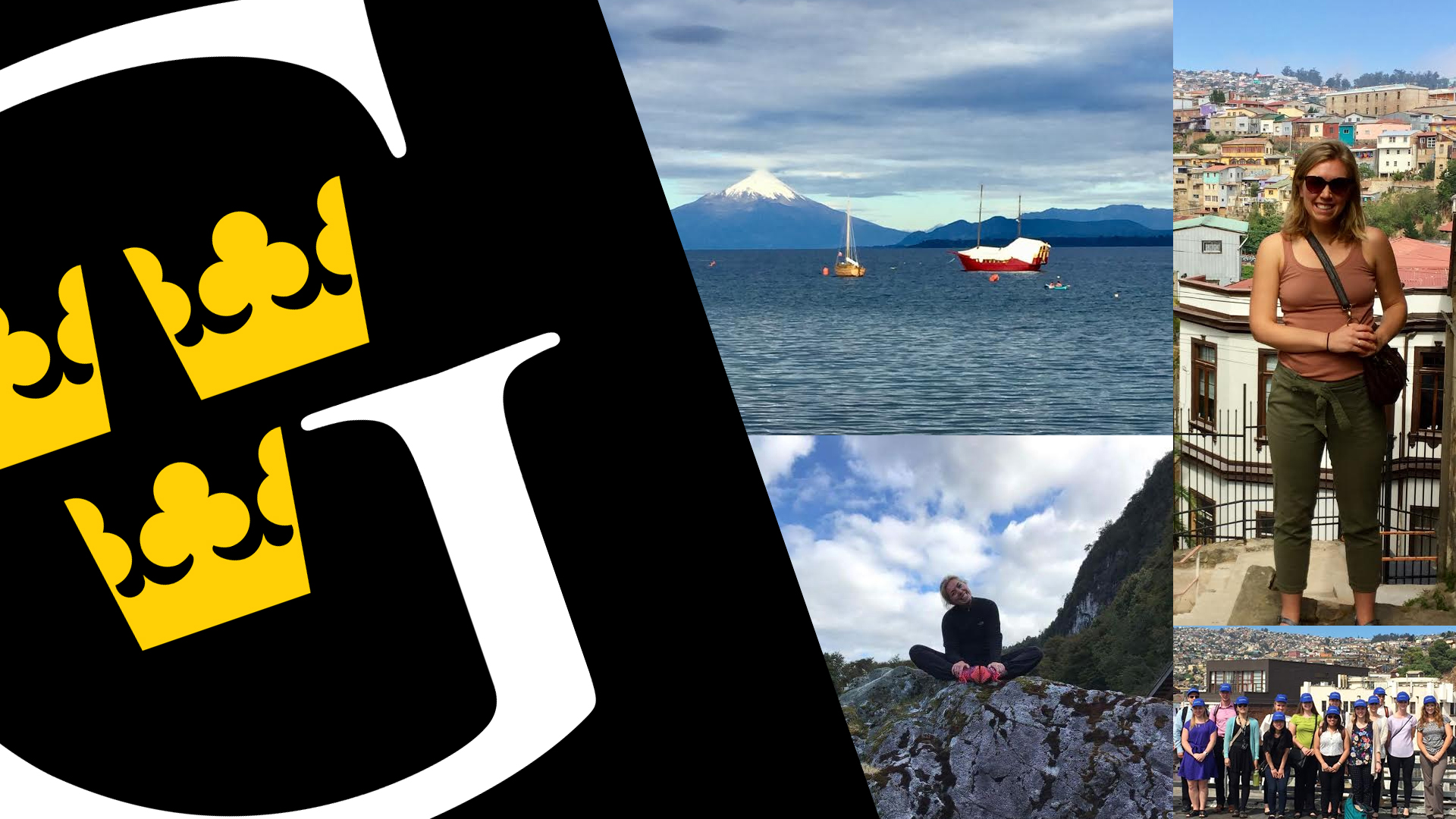Gustavus Adolphus College senior Emily Severson is spending January Interim Experience in Chile through the Upper Midwest Association for Intercultural Education (UMAIE). She, along with students from other colleges and universities in the Midwest, is taking the course “Sustainability through a Business Lens: Exploring People, Planet, and Profits in Chile.”
Here, Severson reflects on her Chilean experience:
Saturday, January 21, in San Pedro de Atacama —
We began our first full morning in San Pedro with a slower pace than the previous days in Santiago. Everyone enjoyed their morning in this quaint, desert town with activities like biking, running, journaling, and exploring the small shops in the town center. Nicole, our Swiss guide, along with Felipe, our southern Chilean guide, met us at our hotel in the early afternoon and we headed off to the Tulum Ruins to begin our immersion into the ancient culture of northern Chile.

The Tulum Ruins are from 800-500 BCE and were home to some of the first indigenous peoples in Chile. According to Nicole, the first people came to Chile from Siberia across what we now know as the Bering Strait. These people moved further south into what today is known as the Atacama Desert, settling into the foothills of the Andes Mountains. Two native animals to this area, the vicuña and the guanaco, were the first animals to be domesticated in Chile, and you may know them as the modern day alpaca and llama. After the domestication of animals, the indigenous people began to create temporary settlements known as Aldeas, and these settlements developed into communities like the ruins we visited. Their buildings were made out of adobe and other organic materials like leafs and preia (a straw-like plant found in Atacama) and made an incredibly efficient insulator. We walked into the small huts and although the hot sun made the desert feel stuffy, the coolness of the adobe hut felt wonderful.
What I loved learning most about these people was their view on community. Nicole explained to our group how these people didn’t have the concept of “mine” because they were solely focused on the betterment of the group. Reciprocity was a key idea, and they always gave back to ensure that everyone in the group had enough. They knew that if they wanted to go far, they had to go together. This lesson from these ancient people stuck with me as I sat amongst my peers who, although we have only been together for a couple of weeks, have grown with me and experienced this life changing adventure with me also.
After we finished our tour of the ruins, Nicole and Felipe brought us to a beautiful Chilean farm in San Pedro so we could experience a traditional Atacaman meal. We started with some toasted corn and fresh baked rolls that were lightly sweetened with the algarroba plant, and for the main dish we were all surprised when they set a steaming hot plate of llama in front of us. After a little bit of mental preparation, I took a bite and I am so thankful I did! This meat is very important to the people here since it is an indigenous animal, and it was also so delicious. The meal ended with a panna cotta-type desert sweetened also with the chañar plant, another native tree in northern Chile. I could definitely eat like a Chilean for the rest of my life.

To end our time at the farm, we had the pleasure of meeting Guillermo Vega, a 70-year-old man who is just as sharp and quick as someone half his age. His family is indigenous to this area, and he shared his stories of growing up in San Pedro before there were doctors and scientific studies that revealed the healing properties of the local plants and fauna.
Guillermo just beamed as he pulled out small plants from the knit bag slung around his body. He had plants that cured indigestion, colds, helped build strong bones and healthier skin, and even prevented cancer. We walked with Guillermo through his farm, occasionally stopping so he could point out a vegetable that produced seeds they sold in the local markets, weeds they used in their shampoo, and the fruits from the trees we had eaten in our meal. At one point, I even met a handsome alpaca and had Mary snap a quick photo of us together! To end this tour, Guillermo sprinkled each of us with colorful confetti and a sign of best wishes into the future, and I know that as this trip ends, that blessing will mean even more as we take what we have learned in Chile and return to the states differently than how we arrived.
– Emily Severson ’17

Leave a Reply
You must be logged in to post a comment.